What are employee rewards: Top strategies and examples for leaders to try in 2024
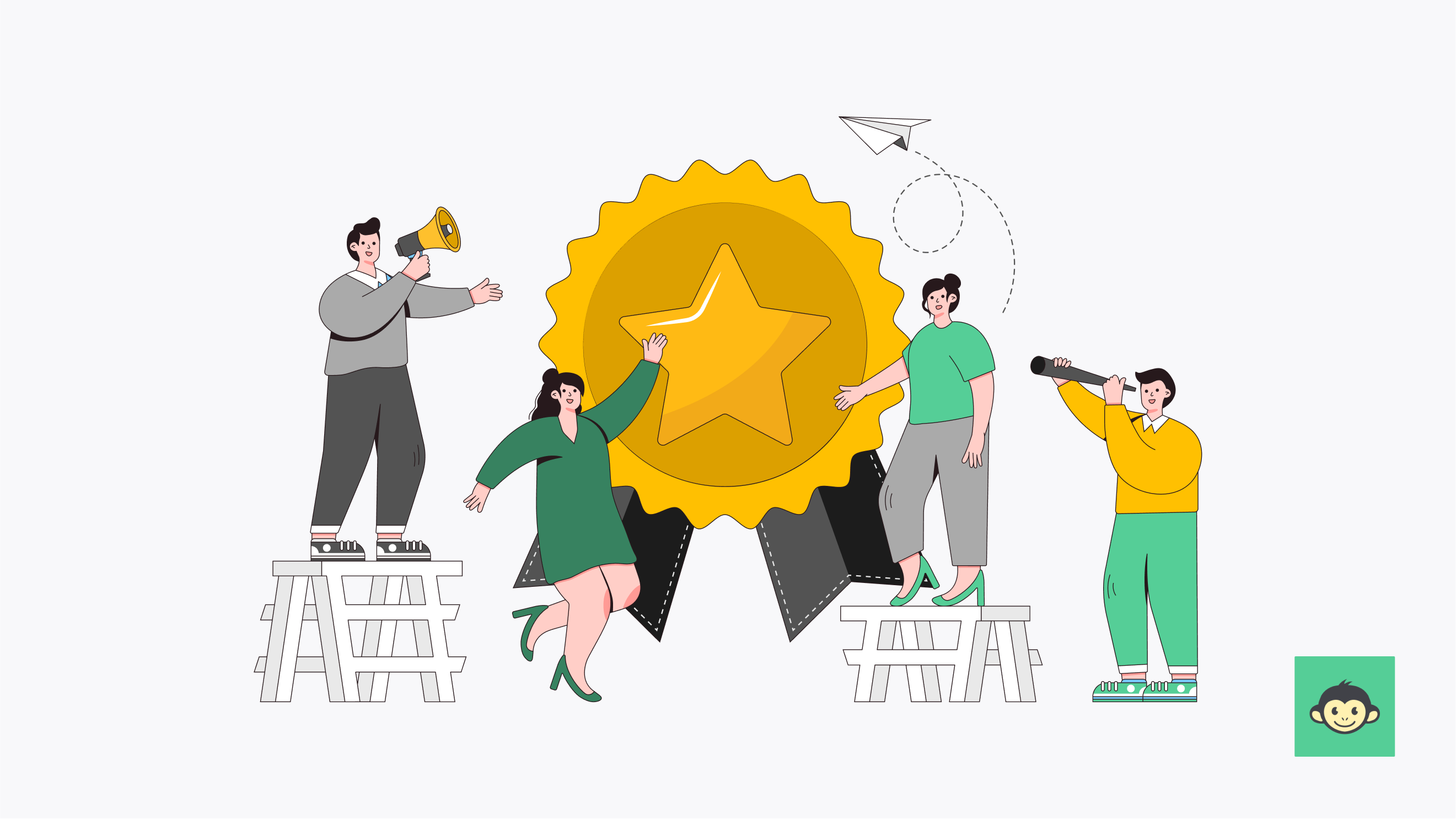
Forget fancy ping pong tables and nap pods. While those perks are nice, true employee motivation goes deeper.
Let's face it: a paycheck alone doesn't cut it anymore. In this blog, we'll explore the science behind what truly makes employees tick: feeling valued and appreciated. We'll unpack the secrets of crafting a meaningful employee rewards program, one that goes beyond the typical and ignites a fire within most employees on your team.
Employee rewards definition
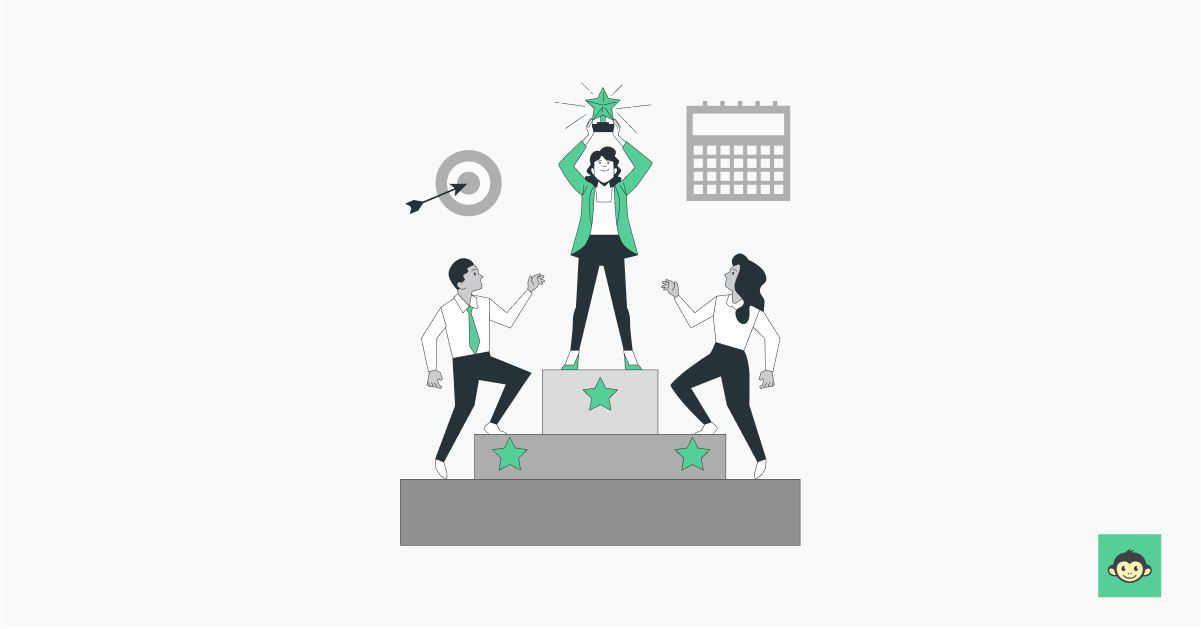
Employee rewards refer to the various forms of compensation, recognition, and benefits that organizations provide to their employees in exchange for their performance, dedication, and contributions.
These rewards can be both monetary and non-monetary, and they aim to motivate employees, enhance job satisfaction, and align individual performance with the company's goals and values.
Employee rewards vs recognition

While employee rewards and employee recognition are often used interchangeably, they represent distinct strategies for acknowledging and motivating employees within an organization.
Understanding the differences and unique benefits of each can help leaders create a more effective and comprehensive approach to employee engagement and satisfaction.
Employee rewards
- Tangible incentives: Employee rewards typically involve tangible incentives such as monetary bonuses, gift cards, or other material benefits. These rewards are often tied to specific performance metrics or achievements, serving as a direct recognition of employees' contributions.
- Performance-based: Rewards are commonly linked to individual or team performance, with criteria established beforehand to objectively measure accomplishments. This performance-based approach incentivizes employees to strive for excellence and align their efforts with organizational goals.
- Motivational tool: Rewards serve as powerful motivational tools, encouraging employees to surpass expectations and excel in their roles. The prospect of receiving rewards can drive increased productivity, performance, and engagement among staff members.
- Competitive advantage: Offering attractive rewards can enhance the organization's competitive advantage in the labor market by attracting top talent and retaining skilled employees. Competitive compensation packages and reward programs contribute to employee satisfaction and loyalty.
- Cost consideration: While rewards can be effective in motivating employees, they also entail financial costs for the organization. Employers must carefully assess the return on investment (ROI) of reward programs to ensure that they are sustainable and aligned with budgetary constraints.
Employee recognition:
- Non-monetary acknowledgment: Employee recognition focuses on non-monetary forms of acknowledgment such as verbal praise, certificates of achievement, or public appreciation. These gestures highlight employees' contributions and reinforce positive behaviors.
- Timely and specific: Recognition should be timely and specific, acknowledging employees' efforts and achievements as soon as possible and highlighting the particular actions or behaviors that contributed to success. This reinforces desired behaviors and encourages repetition.
- Culture of appreciation: Recognition fosters a culture of appreciation within the organization, where employees feel valued and respected for their contributions. A culture of recognition enhances morale, motivation, and job satisfaction among staff members.
- Inclusive approach: Effective recognition programs are inclusive and accessible to all employees, regardless of their position or level within the organization. Recognizing both individual and team accomplishments promotes a sense of belonging and camaraderie among staff members.
- Long-term impact: Unlike rewards, which provide immediate gratification, employee recognition has a long-term impact on employee engagement, loyalty, and retention. Regular and sincere recognition reinforces positive behaviors, strengthens employee morale, and contributes to a positive work environment.
Why are employee rewards and recognition important: 5 Key benefits to know

Employee rewards and recognition play crucial roles in fostering a positive work environment and driving organizational success. Here are five key benefits to consider:
1. Enhanced employee engagement
Rewarding and recognizing employees for their contributions can significantly increase their level of engagement with their work and the organization. When employees feel valued and appreciated, they are more likely to be motivated to perform at their best, resulting in higher productivity and job satisfaction.
2. Improved retention rates
Implementing effective rewards and recognition programs can help organizations retain top talent. Employees who feel recognized and rewarded for their efforts are more likely to stay with the company long-term, reducing turnover rates and the associated costs of hiring and training new employees.
3. Boosted morale and motivation
Regular acknowledgment of employees' achievements and efforts can boost morale throughout the organization. When employees can feel appreciated and recognized for their hard work, they are more motivated to continue striving for excellence, leading to a positive and productive work culture.
4. Increased loyalty and advocacy
Employees who feel valued and appreciated are more likely to develop a sense of loyalty towards their organization. They become advocates for the company, both internally and externally, promoting a positive employer brand and attracting top talent to the organization.
5. Fostered collaboration and teamwork
Recognition programs that highlight team achievements and encourage collaboration can strengthen relationships among team members. By acknowledging the collective efforts of teams, organizations can promote a culture of cooperation and teamwork among entire team, leading to improved communication and collaboration across departments.
What are the types of employee rewards?

Employee rewards come in various forms, catering to the diverse needs and preferences of employees. Here are several types of employee rewards:
Financial compensation
Financial compensation serves as a foundational aspect of employee rewards, directly impacting an employee's income and financial stability. Salaries, typically determined by factors such as job role, experience, and market rates, provide a regular source of income.
Profit sharing programs distribute a portion of the company's profits among employees, aligning their interests with the organization's success. Stock options present opportunities for employees to acquire ownership in the company, providing a stake in its future performance and growth.
Benefits
Employee benefits contribute significantly to the overall well-being and satisfaction of employees. Health insurance coverage ensures access to medical care and helps alleviate concerns about healthcare costs, promoting employees' physical and mental well-being.
Retirement plans, such as 401(k) or pension schemes, provide financial security for employees' future, encouraging long-term commitment to the organization. Understanding the difference between APY vs interest rate can also help employees compare savings and investment options effectively, helping them to maximize their financial benefits.
Paid time off, including vacation days, sick leave, and holidays, allows employees to recharge, manage personal responsibilities, and achieve a healthy work-life balance, leading to greater job satisfaction and productivity.
Perks
Perks offer additional privileges or amenities that enhance employees' quality of life and work experience. Gym memberships and wellness programs promote employees' physical health and well-being, fostering a culture of wellness within the organization.
Company cars or travel allowances provide convenience and flexibility for employees who frequently travel for work, demonstrating the organization's investment in their comfort and convenience.
Other perks, such as onsite childcare facilities, flexible work arrangements, or catered meals, contribute to a positive work environment and employee satisfaction, ultimately boosting retention and productivity.
Career development
Career development opportunities are essential rewards that support employees' professional growth, skill enhancement, and career advancement.
Further education programs, including workshops, seminars, and certifications, empower employees to expand their knowledge and expertise in their respective fields, enhancing their value to the organization.
Skill training initiatives equip employees with the necessary tools and competencies to excel in their roles and adapt to evolving job requirements, fostering a culture of continuous learning and improvement.
What are intrinsic and extrinsic rewards?

Extrinsic rewards
Extrinsic rewards refer to tangible or material incentives provided to employees as recognition for their performance or contributions. These rewards typically have a direct monetary value or offer external benefits.
Examples of extrinsic rewards include financial compensation such as salaries, bonuses, profit sharing, and stock options, which directly impact an employee's income and financial stability.
Benefits such as health insurance, retirement plans, and paid time off provide employees with valuable resources and support, contributing to their overall well-being.
Other extrinsic rewards may include perks such as gym memberships, wellness programs, company cars, or travel allowances, which enhance employees' quality of life and work experience.
Intrinsic rewards:
Intrinsic rewards, on the other hand, are intangible or non-material incentives that come from within the individual and are derived from the nature of the work itself or the satisfaction of accomplishing tasks.
These rewards are inherent to the job or activity and provide employees with a sense of fulfillment, purpose, or personal satisfaction. Examples of intrinsic rewards include feelings of accomplishment, pride, or enjoyment derived from completing challenging tasks or achieving meaningful goals.
Recognition and praise from colleagues or supervisors can also serve as intrinsic rewards, validating employees' efforts and contributions and boosting their self-esteem and confidence.
Opportunities for personal growth, learning, and development are another form of intrinsic reward, as they enable employees to expand their skills, knowledge, and capabilities, enhancing their sense of competence and mastery in their roles.
What are employee rewards programs?
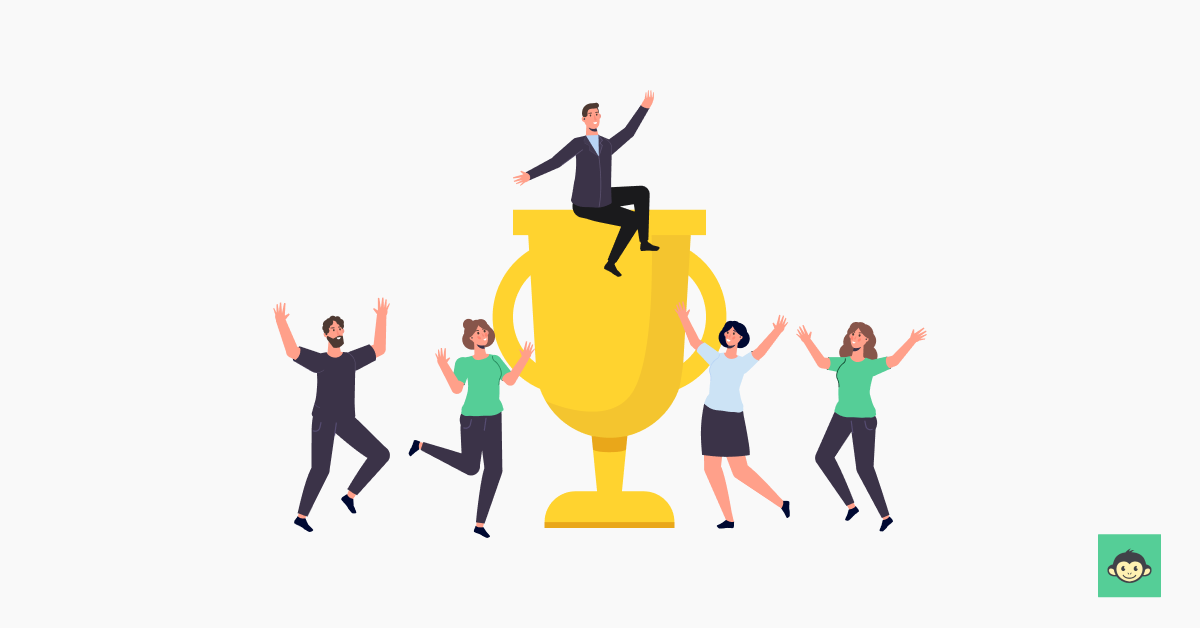
Employee rewards programs are structured initiatives implemented by organizations to recognize and incentivize employees for their contributions and performance. These programs aim to foster a culture of appreciation and motivation within the workplace, ultimately enhancing employee engagement and satisfaction. Key components of employee rewards programs include:
Recognition programs
A recognition program is designed to acknowledge and celebrate employees' achievements and efforts. They may include formal recognition ceremonies, employee of the month awards, or peer-to-peer recognition platforms, encouraging a culture of appreciation and positive reinforcement.
Incentive programs
Incentive programs offer tangible rewards or incentives to employees for meeting or exceeding performance goals or targets. This may include bonuses, commissions, or other financial rewards tied to individual, team, or company-wide objectives, motivating employees to strive for excellence and drive results. Additionally, incorporating a finder's fee percentage can encourage employees to bring in new business opportunities, further boosting the company's growth
Reward structures
Reward structures outline the criteria and mechanisms by which employees can earn rewards within the program. This may involve clear performance metrics, such as sales targets, customer satisfaction scores, or productivity benchmarks, to objectively assess employees' eligibility for rewards.
Variety of rewards
Employee rewards programs often offer a variety of rewards to cater to diverse employee preferences and motivations. This may include both monetary rewards, such as cash bonuses or gift cards, and non-monetary rewards, such as extra vacation days, flexible work arrangements, or personalized experiences, ensuring that rewards are meaningful and valued by employees.
Feedback and evaluation
Effective employee rewards programs incorporate mechanisms for feedback and evaluation to continuously assess their impact and effectiveness. This may involve soliciting feedback from employees through surveys or focus groups, analyzing performance data to measure the program's success, and making adjustments as needed to optimize outcomes.
What makes an employee reward system successful?

Several factors contribute to the success of an employee reward system, ensuring that it effectively motivates, engages, and retains employees. These include:
- Alignment with company values: A successful reward system should be aligned with the organization's values, mission, and strategic objectives. Rewards that reinforce desired behaviors and outcomes help to cultivate a positive organizational culture and drive performance in line with company goals.
- Fairness and transparency: Employees value fairness and transparency in reward systems. Clear criteria for earning rewards, consistent application of policies, and open communication about the reward process build trust and credibility within the organization.
- Customization and flexibility: Recognizing the diverse needs and preferences of employees, a successful reward system offers flexibility and customization. Tailoring rewards to individual preferences, performance levels, and career aspirations enhances their perceived value and effectiveness.
- Timeliness and frequency: Timely recognition and rewards have a more significant impact on employee motivation and morale. A successful reward system incorporates regular and frequent acknowledgment of achievements, ensuring that employees feel valued and appreciated in real-time.
- Integration with performance management: Integrating the reward system with performance management processes ensures that rewards are linked to measurable performance outcomes. Clear performance expectations, ongoing feedback, and performance reviews provide a framework for evaluating and rewarding employee contributions effectively.
- Employee involvement and feedback: Engaging employees in the design and implementation of the reward system fosters ownership and buy-in. Soliciting employee feedback, preferences, and suggestions allows organizations to tailor rewards to meet employees' needs and preferences effectively.
- Continuous evaluation and improvement: A successful and effective reward system is dynamic and adaptable, continuously evaluated and refined based on feedback and performance data. Regular assessments of the system's effectiveness enable organizations to identify areas for improvement and make adjustments to optimize outcomes.
- Leadership support and role modeling: Leadership endorsement and active participation in the reward system are essential for its success. When leaders consistently demonstrate appreciation for employee contributions and actively participate in employee reward ideas and initiatives, it reinforces the importance of recognition and sets a positive example for the rest of the organization.
By incorporating these elements into the design and implementation of an employee reward system, organizations can create a culture of appreciation, motivation, and high performance, driving employee engagement and organizational success.
9 Employee rewards best practices and strategies to structure a successful rewards system
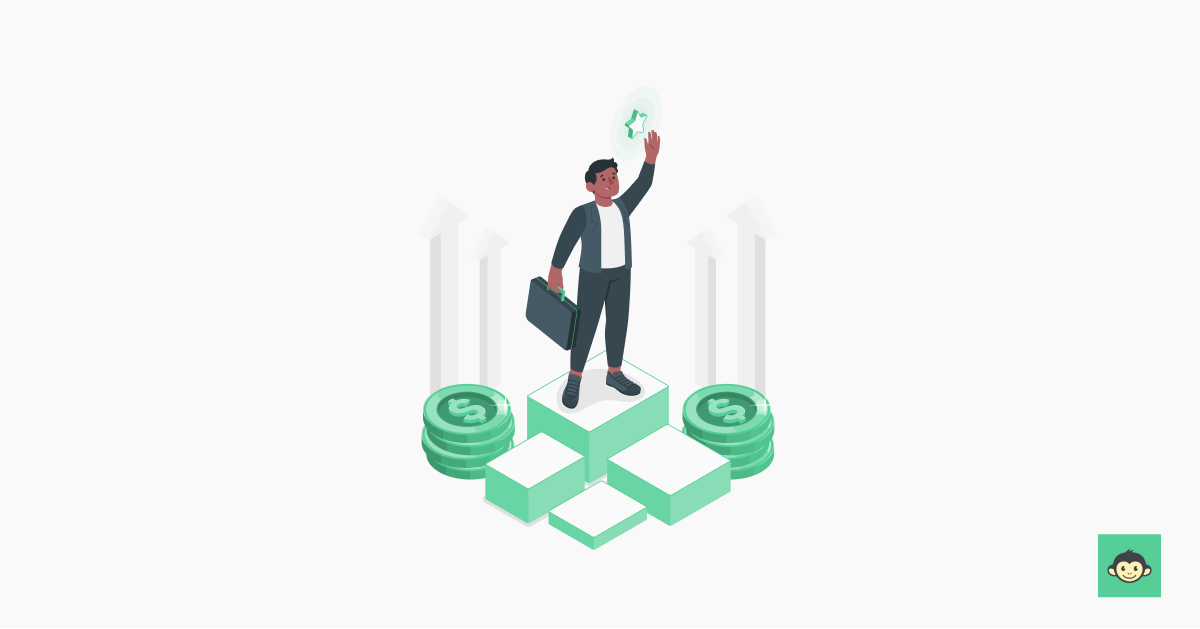
It's imperative to incorporate diverse strategies and best practices that cater to the multifaceted needs of employees. By integrating various approaches, organizations can foster a culture of recognition, motivation, and engagement within the workplace.
Here, we delve into nine key strategies and best practices to structure a successful rewards system, emphasizing the importance of aligning rewards with company values, promoting employee recognition, and creating an environment where employees feel valued and appreciated.
- Align with company values: Ensure that the rewards system reflects the organization's values and objectives, reinforcing desired behaviors and outcomes that align with company culture.
- Foster fairness and transparency: Implement clear and transparent criteria for earning rewards and ensure consistent application of policies, fostering trust and credibility within the organization.
- Customize rewards: Tailor rewards to meet individual preferences and motivations, offering a variety of options, including both monetary and non-monetary incentives, to cater to diverse employee needs.
- Provide timely recognition: Acknowledge employees' achievements promptly and frequently to enhance motivation and morale, promoting a positive work environment.
- Integrate with performance management: Link rewards to measurable performance metrics, providing a framework for evaluating and rewarding employee contributions effectively, and encouraging high performance.
- Solicit employee feedback: Engage employees in the reward system's design and implementation, gathering input and collecting their feedback to ensure relevance and effectiveness, and fostering a sense of ownership among employees.
- Continuously evaluate and adapt: Regularly assess the reward system's impact and make adjustments based on feedback and performance data to optimize outcomes, promoting ongoing improvement and effectiveness.
- Lead by example: Demonstrate leadership support for the reward system by actively participating in recognition initiatives and reinforcing the importance of appreciation, setting a positive tone for the organization.
- Promote a culture of appreciation: Foster a workplace culture where recognition and rewards are valued and celebrated, encouraging ongoing employee engagement and satisfaction, and ultimately driving organizational success.
Significance of employee rewards program at work

Employee rewards programs play a significant role in fostering a positive work environment and promoting employee engagement and satisfaction. By recognizing and rewarding employees for their contributions and performance, these programs contribute to various aspects of organizational success.
- Employee engagement and motivation: Rewards programs enhance employee motivation by acknowledging their efforts and achievements, thereby boosting morale and job satisfaction. Recognized employees are more likely to feel valued and appreciated, leading to increased engagement and commitment to their work.
- Retention of top talent: A well-designed rewards program can help improve employee retention rates by demonstrating the organization's commitment to recognizing and rewarding employee contributions. Employees who feel valued and appreciated are more likely to remain with the company, reducing turnover and retaining top talent.
- Alignment with company values and culture: Rewards programs that align with company values reinforce desired behaviors and promote a positive company culture. By recognizing employees who embody organizational values, these programs contribute to the overall ethos of the company and reinforce cultural norms.
- Enhanced employee performance and productivity: Recognized employees are more likely to be motivated to perform at their best, leading to increased productivity and performance levels. By incentivizing high performance through rewards and recognition, organizations can drive better business outcomes and achieve their strategic objectives.
- Improved workplace relationships: Employee rewards programs can strengthen workplace relationships by promoting a culture of appreciation and collaboration. Recognized employees are more likely to feel connected to their colleagues and develop positive relationships within their teams, contributing to a cohesive and supportive work environment.
- Professional development and growth: Rewards programs that include opportunities for professional development and growth can further enhance employee satisfaction and engagement. Employees who have access to training, mentorship, and career advancement opportunities are more likely to feel invested in their personal and professional growth within the organization.
- Positive work environment: By creating a culture of recognition and appreciation, rewards programs contribute to a positive work environment where employees feel valued, respected, and supported. This fosters a sense of belonging and well-being among employees, leading to higher levels of job satisfaction and overall happiness.
What types of rewards are most effective?
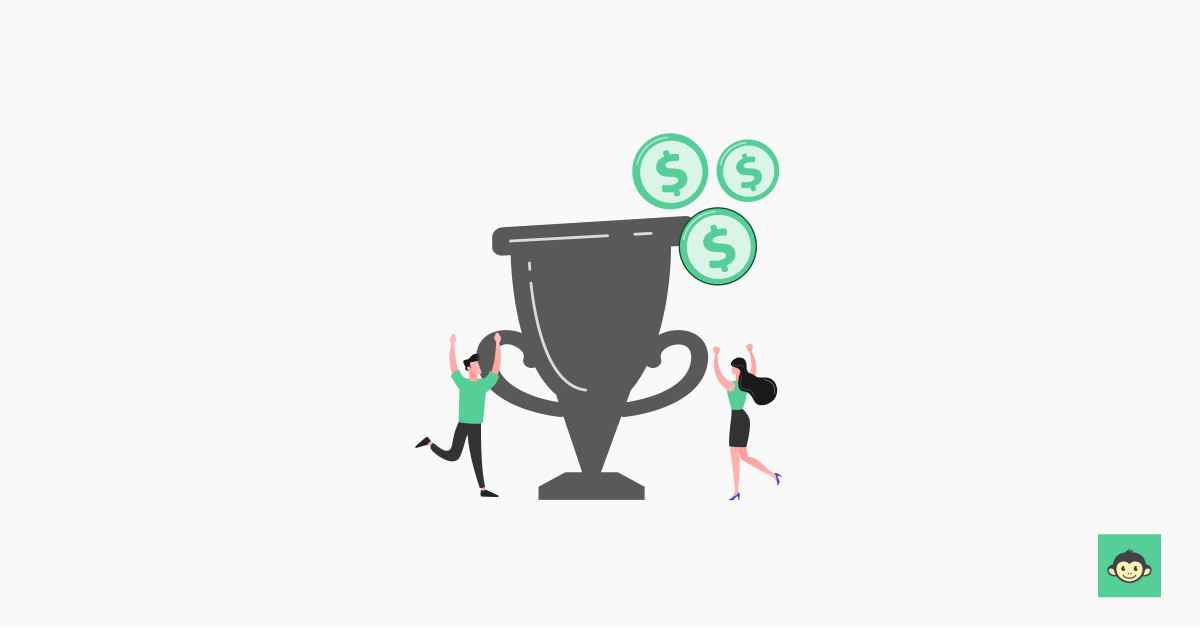
The things that one might use to reward employees often vary depending on the needs and preferences of employees, but several key strategies have shown consistent effectiveness:
- Monetary rewards: Financial incentives such as bonuses, profit sharing, and stock options are highly effective in motivating employees and directly impacting their income, boosting their motivation and performance.
- Non-monetary rewards: While monetary rewards are effective, non-monetary incentives such as extra vacation days, flexible work arrangements, and personalized experiences can also be highly impactful, catering to diverse employee preferences and motivations.
- Recognition programs: Employee recognition programs, including verbal praise, written acknowledgment, and public recognition, are powerful tools for boosting morale, enhancing employee engagement, and fostering a positive work environment.
- Professional development opportunities: Offering opportunities for further education, skill training, and career advancement demonstrates a long-term investment in employees' growth and development, enhancing their job satisfaction and commitment to the organization.
- Career advancement opportunities: Providing clear paths for career progression, promotions, and advancement within the organization motivates employees to perform at their best and fosters a sense of loyalty and commitment.
- Perks and benefits: Additional benefits such as health insurance, retirement plans, gym memberships, and wellness programs contribute to employees' overall well-being and job satisfaction, enhancing their loyalty and retention.
- Team-based rewards: Recognizing and rewarding teams for their collective achievements and contributions fosters collaboration, camaraderie, and a sense of shared success, boosting morale and motivation.
- Customized rewards: Tailoring rewards to individual preferences and motivations ensures that they are meaningful and impactful for each employee, enhancing their perceived value and effectiveness.
How to increase participation in employee reward programs
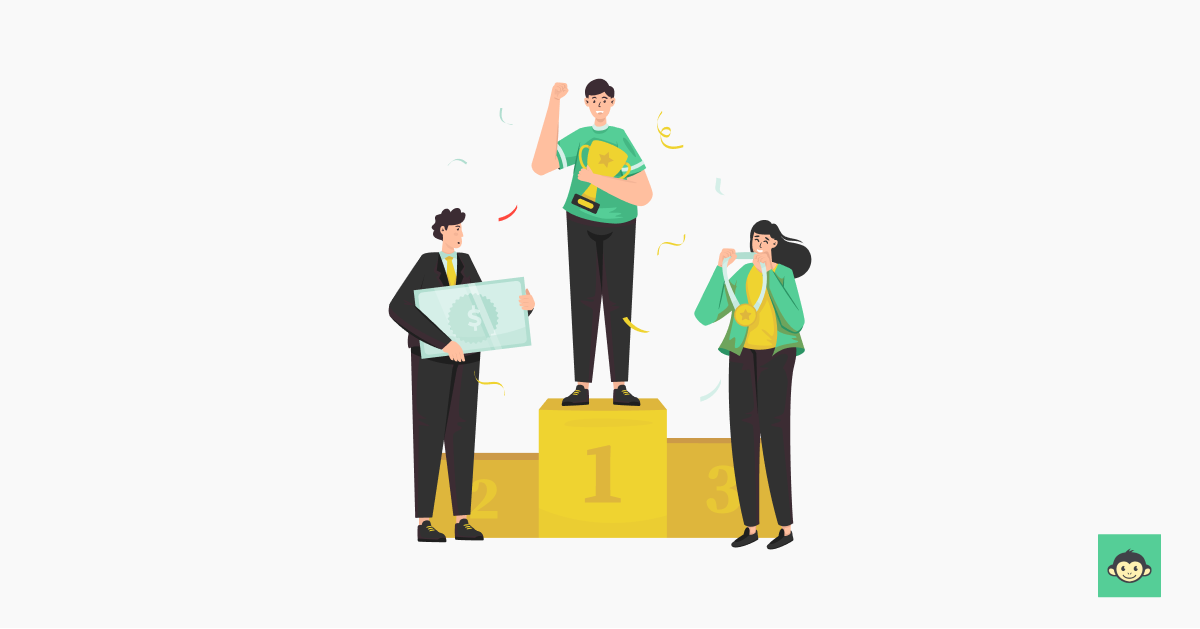
Increasing participation in employee reward programs requires strategic planning and implementation to effectively engage employees and encourage their active involvement. Here are some key strategies:
- Clear communication: Clearly communicate the purpose, benefits, and mechanics of the reward program to employees, ensuring they understand how participation can benefit them personally and contribute to overall organizational goals.
- Promote awareness: Use various communication channels, such as email, intranet, posters, and team meetings, to regularly promote the reward program and keep it top-of-mind for employees.
- Leadership endorsement: Gain support from senior leaders and managers by encouraging their active participation and endorsement of the reward program. When employees see leaders embracing the program, they are more likely to engage with it.
- Tailored incentives: Offer incentives that resonate with employees' preferences and motivations, ensuring the rewards are meaningful and desirable to them. Consider conducting surveys or focus groups to gather input on preferred rewards.
- Gamification: Introduce gamification elements such as challenges, competitions, and leaderboards to make participation in the reward program more fun and engaging for employees. Incorporate rewards for achieving milestones or completing tasks.
- Peer recognition: Encourage peer-to-peer recognition by allowing employees to nominate their colleagues for rewards based on their contributions and achievements. This fosters a culture of appreciation and encourages active participation.
- Training and education: Provide training and education on the reward program to ensure employees understand how it works and how they can maximize their participation. Offer tutorials, workshops, or one-on-one sessions as needed.
- Feedback loop: Establish a feedback mechanism where employees can provide suggestions, share their experiences, and voice any concerns or ideas for improvement regarding the reward program. Act on feedback to continuously enhance the program's effectiveness.
- Incorporate social elements: Create opportunities for social interaction and collaboration around the reward program, such as hosting recognition events, team celebrations, or virtual forums where employees can share success stories and congratulate each other.
- Track and celebrate success: Regularly track participation metrics and celebrate milestones or achievements in the reward program. Recognize and reward employees who actively participate and contribute to the program's success, reinforcing positive behaviors.
Significance of employee rewards and recognition survey in measuring engagement

A survey on the employee experience of rewards and recognition serves as a pivotal tool in measuring engagement within an organization. By systematically gathering feedback from employees regarding their experiences and perceptions related to rewards and recognition practices, this survey offers valuable insights into various facets of employee engagement.
Through the survey, organizations can gauge the effectiveness of existing reward and recognition initiatives in fostering a positive work environment and motivating employees. It provides a platform for employees to express their opinions on the fairness, transparency, and impact of these programs, offering valuable feedback for organizational leaders to consider.
The survey enables organizations to identify areas of strength and areas for improvement in their reward and recognition strategies. By analyzing survey responses, organizations can pinpoint specific challenges or gaps in their current practices and develop targeted interventions to address them.
The survey serves as a mechanism for monitoring changes in employee engagement over time. By conducting regular surveys on rewards and recognition, organizations can track trends, identify emerging issues, and assess the effectiveness of interventions implemented to enhance engagement.
The employee rewards and recognition survey plays a crucial role in helping organizations understand, measure, and improve employee engagement. It provides actionable insights that inform strategic decision-making and contribute to the creation of a positive and rewarding workplace culture.
35+ Employee rewards questionnaire to ask in 2024

Here are a few questions you could ask in 2024. These questions cover various aspects of employee rewards and recognition, including satisfaction, effectiveness, transparency, inclusivity, and impact on employee engagement. Adjustments can be made based on specific organizational needs and goals.
- How satisfied are you with the current employee rewards and recognition programs offered by the company?
- Do you feel that the rewards and recognition programs align with the company's values and goals?
- Have you received any form of recognition for your contributions in the past six months?
- How frequently do you receive feedback on your performance from your manager or peers?
- Which types of rewards do you find most motivating and meaningful?
- Do you believe that the rewards and recognition programs are fair and transparent?
- Have you ever nominated a colleague for recognition based on their contributions to the team or organization?
- How would you rate the effectiveness of the rewards and recognition programs in boosting employee morale?
- Have you participated in any incentive programs offered by the company? If so, please share your experience.
- Do you believe that the rewards and recognition programs have a positive impact on employee retention?
- Are you aware of the criteria for earning rewards and recognition within the organization?
- How satisfied are you with the frequency of rewards and recognition events or activities?
- Have you ever provided feedback or suggestions for improving the rewards and recognition programs?
- Do you feel that your efforts and achievements are adequately acknowledged by your manager and colleagues?
- How likely are you to recommend the company's rewards and recognition programs to a friend or colleague?
- Are there any specific rewards or incentives you would like to see added to the existing programs?
- Do you feel that the rewards and recognition programs contribute to a positive work culture?
- Have you ever attended a recognition event or ceremony hosted by the company?
- How satisfied are you with the communication and promotion of the rewards and recognition programs within the organization?
- Do you believe that the rewards and recognition programs help foster a sense of belonging and appreciation among employees?
- Have you noticed any changes in employee engagement since the implementation of the rewards and recognition programs?
- How would you rate the level of transparency in the selection process for receiving rewards or recognition?
- Do you feel that the rewards and recognition programs effectively motivate you to perform at your best?
- Have you ever received feedback from senior leadership or executives on your performance or contributions?
- How satisfied are you with the variety of rewards and incentives offered by the company?
- Do you believe that the rewards and recognition programs help promote teamwork and collaboration?
- Have you ever participated in a peer-to-peer recognition program or initiative?
- How would you rate the accessibility of information about the rewards and recognition programs?
- Do you feel that the rewards and recognition programs are inclusive and equitable for all employees?
- Have you ever declined participation in a rewards or recognition program? If so, please explain why.
- How satisfied are you with the process for nominating colleagues for recognition?
- Do you believe that the rewards and recognition programs help reinforce the company's core values?
- Have you ever received personalized feedback along with a reward or recognition?
- How satisfied are you with the level of creativity and innovation in the rewards and recognition programs?
- Do you feel that the rewards and recognition programs adequately acknowledge both individual and team contributions?
- How would you rate the overall impact of the rewards and recognition programs on employee morale and job satisfaction?
- Are there any additional comments or suggestions you would like to provide regarding the rewards and recognition programs?
Employee rewards examples: 7 Examples to get inspiration from

Here are 7 examples of employee rewards to inspire your recognition efforts and foster a culture of employee appreciation within your organization.
- Company swag: Provide branded merchandise such as apparel, gadgets, or accessories featuring the company logo or branding, allowing employees to showcase their pride and affiliation with the organization.
- Special events or outings: Organize team-building activities, off-site retreats, or social events such as team lunches, happy hours, or holiday parties to celebrate achievements, promote camaraderie, and strengthen workplace relationships.
- VIP parking or reserved spaces: Offer preferred parking spots or reserved parking spaces close to the workplace entrance as a perk for top performers or employees who demonstrate exceptional dedication and commitment.
- Career coaching or mentorship: Provide access to career coaching, mentorship programs, or executive coaching sessions to support employees' professional growth, enhance their skills, and facilitate career advancement opportunities.
- Workplace upgrades or amenities: Invest in workplace upgrades or amenities such as ergonomic furniture, standing desks, relaxation areas, or upgraded office equipment to improve comfort, productivity, and satisfaction.
- Community service opportunities: Offer paid time off or volunteer days for employees to participate in community service activities, charitable initiatives, or philanthropic projects aligned with the company's values and mission.
- Employee referral bonuses: Implement a referral program that rewards employees for referring qualified candidates who are subsequently hired by the company, incentivizing employee engagement in recruitment efforts and promoting a culture of talent acquisition.
Learning and development budgets: Allocate budgets or stipends for employees to pursue personal or professional development opportunities outside of traditional training programs, such as attending workshops, enrolling in online courses, or purchasing educational materials.
Conclusion
Implementing diverse and meaningful employee rewards not only boosts morale and engagement but also cultivates a positive workplace culture, fostering continuous growth and success. Need some help? Try CultureMonkey for its innovative employee engagement solutions today!



